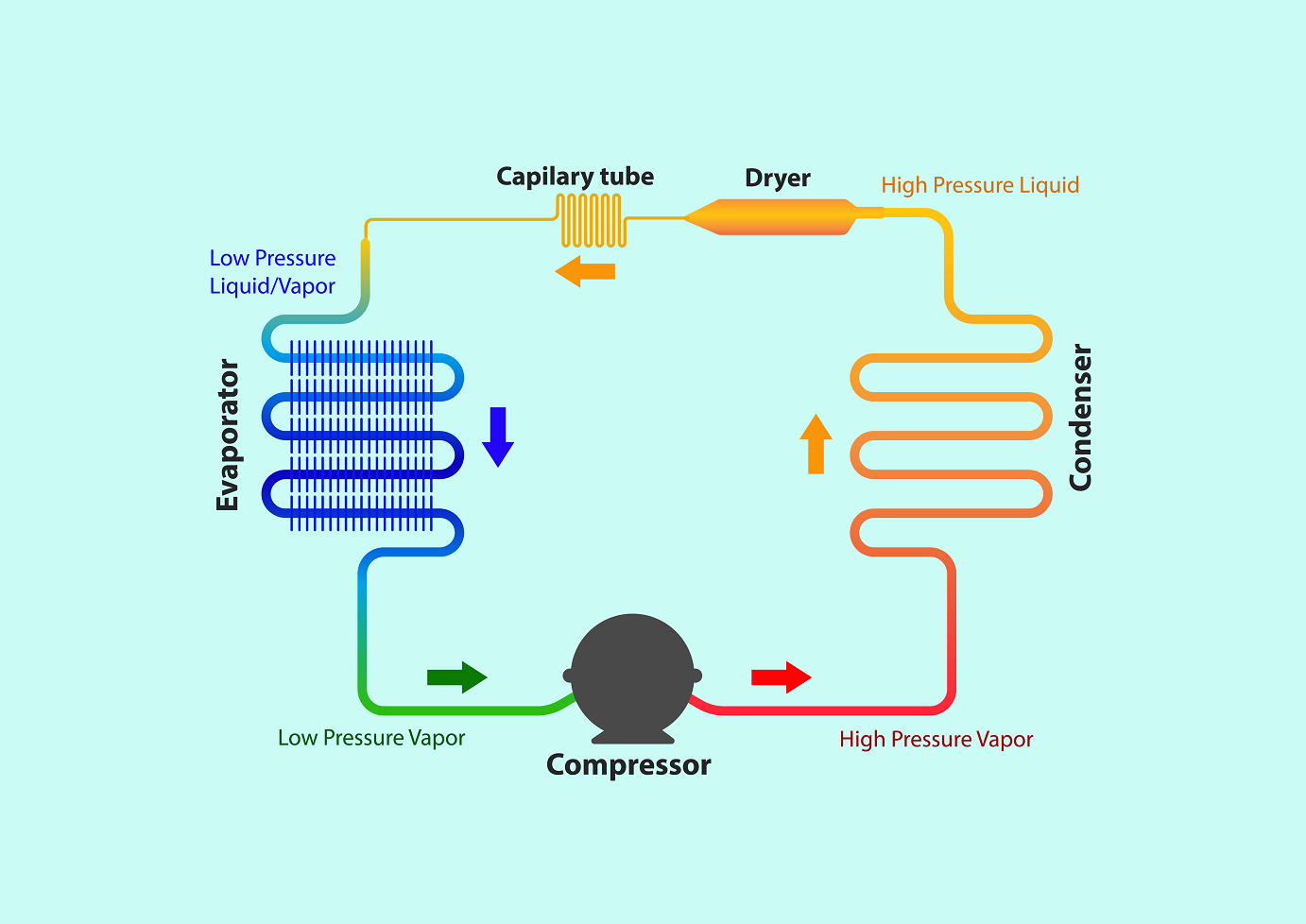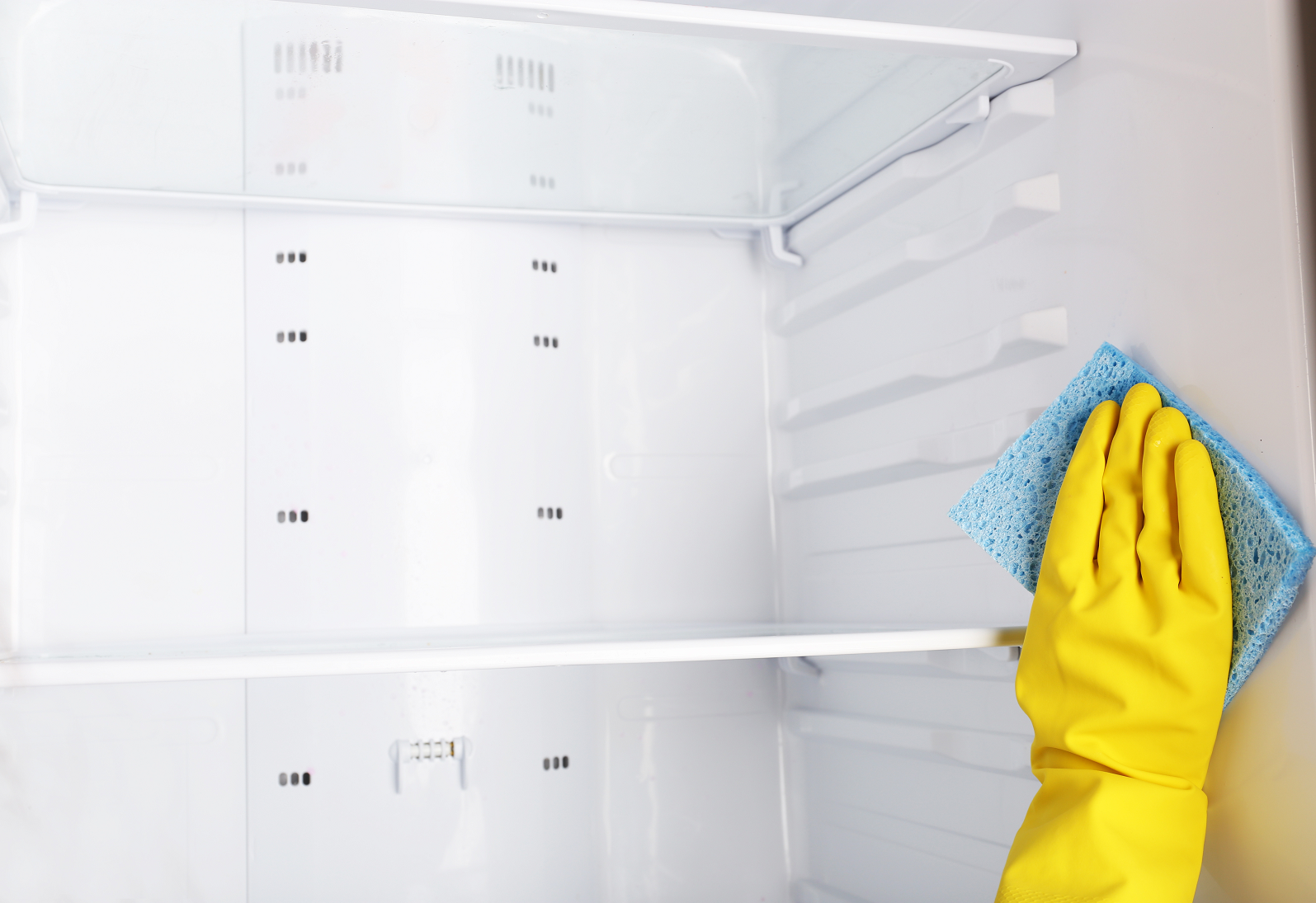How Does a Propane Freezer Work?

Refrigeration technology has evolved significantly over the years, with an increasing focus on energy efficiency and environmental sustainability. One of the most innovative advancements in this field is the use of propane refrigerant in freezers. Eco-friendly and ultra-refined propane used as refrigerant is known in the refrigeration industry as R290 refrigerant. In this article, we’ll explore the mechanics, benefits, and applications of propane freezers.
KEY TAKEAWAYS
- Propane freezers use R290, a naturally occurring refrigerant with a low global warming potential (GWP) of 3 and zero ozone depletion potential (ODP). This makes them an environmentally sustainable and energy-efficient alternative to traditional refrigeration systems.
- R290 freezers operate through a compression, condensation, expansion, and evaporation cycle, leveraging the excellent thermodynamic properties of propane refrigerant to maintain optimal cooling with minimal energy consumption.
- Designed with safety in mind, R290 freezers use minimal refrigerant quantities, sealed systems, and leak detection to ensure safe operation. They are ideal for commercial, residential, industrial, and transport applications, offering reliable and quiet cooling for diverse needs.
What Is Propane Refrigerant?
R290 is the industry name for propane refrigerant, a naturally occurring hydrocarbon. Unlike synthetic refrigerants such as chlorofluorocarbons (CFCs) and hydrofluorocarbons (HFCs), propane is environmentally friendly, with a low global warming potential (GWP) and zero ozone depletion potential (ODP).
While R290 is propane, it is highly refined and specifically manufactured for use in refrigeration systems, making it safe and efficient under controlled conditions.

How Does a Propane Freezer Work?
The basic operation of an R290 propane freezer is similar to any other refrigeration system, relying on the principles of heat transfer and the refrigeration cycle. Here’s how it works:
Compression
The R290 refrigerant enters the compressor as a low-pressure gas. The compressor compresses the gas, raising its pressure and temperature.
Condensation
The high-pressure, high-temperature propane gas flows into the condenser coils, where it releases heat to the surrounding environment. This process causes the gas to condense into high-pressure propane liquid.
Expansion
The liquid propane refrigerant passes through an expansion valve or capillary tube. This reduces the pressure, causing the refrigerant to cool significantly and turn into a low-pressure liquid/gas mixture.
Evaporation
The cooled refrigerant enters the evaporator coils inside the freezer. Here, it absorbs heat from the freezer's interior, cooling the air inside. The propane refrigerant evaporates back into a low-pressure gas, completing the cycle.
This continuous process keeps the interior of the freezer cool while efficiently managing energy consumption.
Key Components of an R290 Freezer
Compressor
This pump compresses the R290 refrigerant, increasing its pressure and temperature to facilitate the refrigeration cycle.
Condenser Coils
Located at the back or bottom of the freezer, these coils release heat absorbed from inside the freezer.
Expansion Device
Reduces the pressure of the liquid refrigerant to cool it before it enters the evaporator.
Evaporator Coils
Located inside the freezer, these coils absorb heat from the interior, cooling the air. Metal fins surrounding the evaporator coils aid in the heat transfer process.
Refrigerant
Propane serves as the refrigerant, circulating through the system and transferring heat.
Why Choose a Propane Freezer?
Eco-Friendly
R290 has a GWP of just 3, compared to traditional HFC refrigerants like R134a, which have a GWP of over 1,400. Its zero ODP ensures it doesn’t harm the ozone layer.
Energy Efficiency
R290 freezers are highly energy-efficient. The refrigerant has excellent thermodynamic properties, requiring less energy to achieve the same cooling effect.
Low Operating Costs
The energy efficiency of R290 translates into lower electricity bills, making it a cost-effective option over time.
Compliance with Regulations
Many governments and international organizations are phasing out high-GWP refrigerants. R290 is future-proof, aligning with global environmental standards.
Quiet Operation
Thanks to its thermodynamic properties, R290 systems often operate at lower pressures, resulting in quieter operation.
Applications of R290 Propane Freezers
Commercial Refrigeration
Widely used in supermarkets, restaurants, and convenience stores for cooling displays and food storage.
Residential Freezers
Gaining popularity in homes due to their eco-friendliness and efficiency.
Industrial Freezers
Ideal for industrial cooling systems requiring large-scale, reliable refrigeration.
Transport Refrigeration
Used in trucks and shipping containers for the efficient transportation of perishable goods.
Safety Considerations
While propane is an excellent refrigerant, it is flammable due to its hydrocarbon nature. Manufacturers take the following precautions to ensure safety:
Small Refrigerant Quantities
The amount of R290 used in freezers is minimal, reducing the risk of combustion.
Leak Detection Systems
Many systems incorporate sensors and safety devices to detect leaks promptly.
Sealed Systems
The manufacturer hermetically seals the propane refrigerant system to prevent leaks.

Maintenance Tips for R290 Freezers
Regular Cleaning
Follow these tips to keep your freezer clean:
- Keep the condenser coils clean to ensure efficient heat exchange.
- Clean vent louvers at the front and back of the freezer to ensure proper airflow through the cabinet and over the condenser coils.
- Regularly clean the shelves and inside of the freezer.
Schedule Repair Quickly When Problems Arise
When you notice any cooling problems or unusual noises, schedule freezer repair service immediately. A service technician will visit your home and quickly fix the problem so your freezer will continue to operate safely and efficiently.
Professional Servicing
Schedule professional freezer maintenance service yearly to have the propane freezer serviced by certified technicians familiar with R290 systems. The technician will clean the condenser coils if needed and thoroughly check the compressor, sealed system and all major components in the freezer to make sure the appliances is working safely and efficiently.
Annual professional freezer maintenance will also help your propane freezer last longer.
Propane freezers represent a significant leap forward in refrigeration technology, offering an eco-friendly, energy-efficient, and cost-effective solution for cooling needs. With their low environmental impact and excellent performance, these freezers are increasingly becoming the standard for both commercial and residential applications.
Understanding how R290 freezers work helps you appreciate their benefits and make informed decisions when upgrading or investing in sustainable refrigeration solutions.
Whether you’re motivated by environmental concerns, energy savings, or regulatory compliance, a propane freezer is a smart and forward-thinking choice.
Schedule your freezer maintenance now!
Sears technicians know all the top freezer brands. We can maintain your appliance no matter where you bought it.
Was this information helpful?
Schedule your freezer maintenance now!
Maintain Freezer Resources
Learn how a flash freezer works and how to keep your freezer in top shape.
Learn how a freezer works and how to choose the right one to fit your needs.
Learn how to defrost a freezer. Get expert advice on why and how often you should defrost your chest or upright freezer.
Can a freezer be too full? Get the facts and expert tips from Sears Home Services.
Glossary Terms
A freezer bag is a specially designed plastic bag used for the cold storage of food in the freezer, offering protection against freezer burn and preserving the food's freshness and flavor over extended periods.
A freezer compressor is a vital component of a freezer's refrigeration system, functioning as a pump to circulate refrigerant through the system, which cools the interior by absorbing and expelling heat.
A freezer door gasket is a flexible seal that outlines the edge of the freezer door, ensuring an airtight closure to maintain cold temperatures inside and prevent warm air from entering.
A manual defrost freezer is an appliance that needs to be switched off and allowed to thaw periodically to remove accumulated ice, ensuring efficient operation and storage space maximization.
Common Repair Freezer Symptoms
The most common reasons your Whirlpool freezer won't make ice are a failed compressor, old water filter or a faulty dispenser.
The most common reasons your Whirlpool freezer is not working are a failed compressor, malfunctioning electronic control board or a faulty condenser fan motor.
The most common reasons your Whirlpool freezer is not cooling are a failed compressor, malfunctioning electronic control board or a bad evaporator.
The most common reasons your Whirlpool freezer light is not working are a malfunctioning electronic control board, broken LED light assembly or a bad power supply board.
The most common reasons your Whirlpool freezer is leaking water are a clogged drain tube, cracked water tubing or a bad evaporator.
The most common reasons your Whirlpool freezer is leaking are a clogged drain tube, dead ice maker assembly or a bad evaporator.



